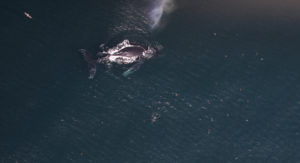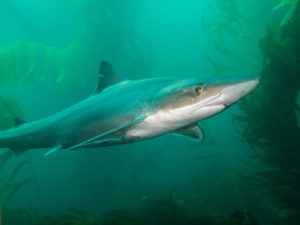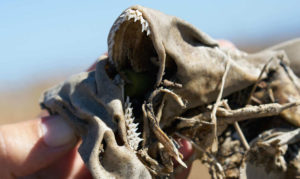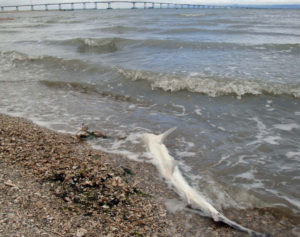This past July, Team Fish Finder, a group of five expert fishermen involved with Shark Sanctuary San Francisco, a project of SeaStewards, skewered a “captain’s platter” of salmon and squid on a circle hook. Their bait succeeded in hooking a 250-pound sevengill cowshark. The sevengill is the top predator in the Bay, which is also home to leopard, brown smoothhound, spiny dogfish, and soupfin sharks. The fishermen pulled the shark on board, but instead of killing it, they measured it, tagged it, and took a fin clipping. When they released the shark, it sported a laminated tag with an identification number and a phone number for the California Academy of Sciences. If you happen to be an angler who catches the fish in the future, the folks working on SeaStewards’ Shark Sanctuary San Francisco project hope you’ll report the shark’s size and where you caught it. For your efforts, you’ll get two free tickets to the California Academy of Sciences and the satisfaction of contributing to shark conservation.
Shark Sanctuary wants to save the Bay’s sharks, but to do that scientists need to know more about them. Currently, we don’t know how many sharks there are, where they are, or how many are being caught by anglers.
Each spring, soupfin sharks use the relative safety of the Bay to breed and give birth before returning to the open ocean in summer. Soupfin sharks once supplied California’s most robust shark fishery, with over 24 million pounds landed between 1936 and 1944 for meat, oil-rich livers, and fins. Shark finning (slicing off a shark’s fins and throwing the dying fish back in the ocean) has been outlawed in the United States since 2000, but it’s still practiced worldwide to meet the demand for shark-fin soup. SeaStewards’ founder David McGuire says that while it is difficult to alter the behavior of the 300 million shark-fin soup eaters in China, much can be done to reach those who frequent the 100 San Francisco restaurants that serve the dish.
To learn more about sharks and what you can do to protect them, check out Sharktoberfest II: On October 14, the California Academy of Sciences will present SHARKLIFE!, where McGuire will show a sneak preview of his new film about San Francisco shark research efforts. On October 23, join the SharktoberKidfest at the Gulf of the Farallones National Marine Sanctuary Education Center at San Francisco’s Crissy Field. Also on October 23, go “Cruising for Sharks” during a live-music dance party aboard the Angel Island ferry, leaving Tiburon at 6:30 p.m. Find more info at seastewards.org.

.jpg)



